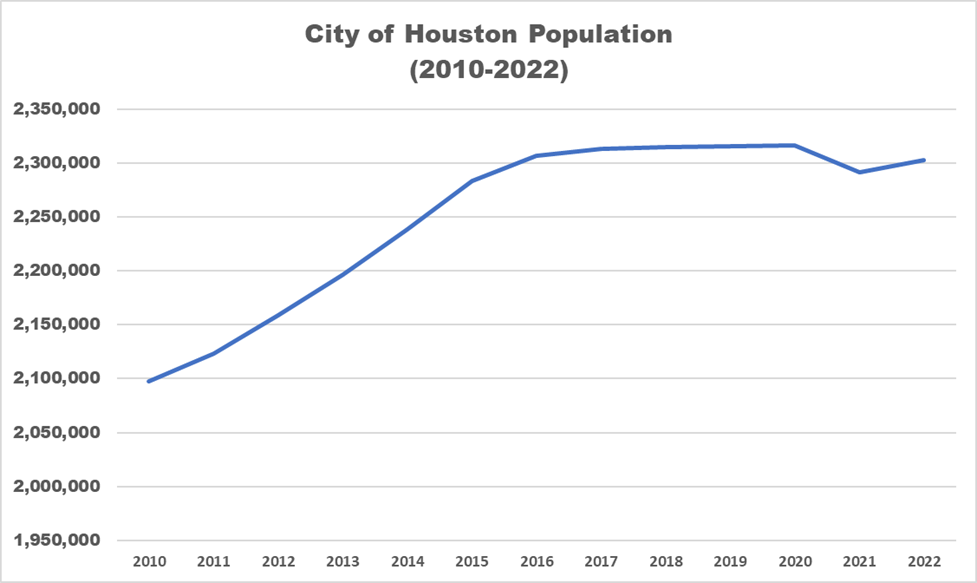The US Census just released its estimates of the population of cities and counties. The Census estimates that after losing population in 2021 for the first time in decades, Houston’s population rose in 2022 by about 11,000 or .5%. Ever since 2015, the Census estimates have been bouncing around the 2.3 million level.

The Census’ year-over-year estimates are based on surveys of approximately 3 million US households and are frequently revised. For example, the original estimate for Houston’s population in 2020 was 2,316,000 but in the estimate just released, the 2020 number has been revised down to 2,299,867. So, the variations from year-to-year are not all that significant.
But what is significant is the shape of the curve above. After decades of break-neck growth, around 2015 the City population went flat and has stayed that way ever since.
In contrast, Harris County has continued to add population, albeit at a decelerating pace. But the Census estimate shows that the growth rate for the Houston MSA1 continues to accelerate. Their estimate is that the MSA added 124,000 new residents or 1.7%. That is up from an increase last year of 75,000 (1.1%).
If the Census estimates are right, less than 10% of the people moving to the Houston area are electing to live in the City itself. That should be a giant red flag. In 1950, the population of Detroit was about 2 million. Today, it is just over 600,000. At the same time the Detroit metropolitan area grew from about 2.7 million to over 3.5 million.
The success of a region does not guarantee the success of its core city. Unless the City begins to improve the value proposition of living in it, I think we will likely see its population continue to flat line, if not worse.

